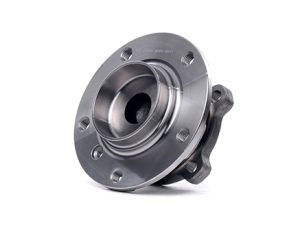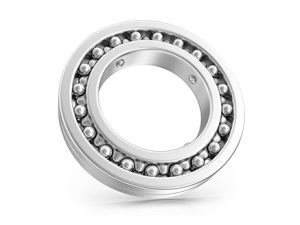Table of Contents
- What is a Hub?
- What is a Bearing?
- How Do Hubs and Bearings Work Together?
- How Do I Know if My Bearings or Hubs Are Damaged?
- How Do Hubs and Bearings Fail?
- What Are the Consequences of a Failed Hub or Bearing?
- How Often Should I Replace My Bearings and Hubs?
- Can I Replace the Hubs and Bearings Myself?
- What Should I Look for When Buying Replacement Hubs and Bearings?
When it comes to the performance and safety of a vehicle, hubs and bearings play a crucial role in ensuring smooth operation. These essential components are part of the wheel assembly, helping to facilitate rotation, reduce friction, and support the weight of the vehicle. Yet, for many vehicle owners, hubs and bearings remain somewhat mysterious. In this article, we will address some of the most frequently asked questions (FAQs) about hubs and bearings, including their functions, common issues, maintenance, and replacement.
What is a Hub?

A hub is a central component in a vehicle’s wheel assembly, connecting the wheel to the axle. It is the part that allows the wheel to rotate freely while supporting the vehicle’s weight. The hub assembly typically consists of the wheel hub, bearings, and seals, which work together to ensure smooth operation.
The hub plays several critical roles, including:
- Supporting the Wheel: The wheel hub connects to the wheel itself and is responsible for bearing the weight of the vehicle.
- Enabling Rotation: The bearings inside the hub allow the wheel to rotate with minimal friction.
- Providing Stability: The hub holds the wheel firmly in place, preventing wobbling or misalignment during driving.
What is a Bearing?

A bearing is a mechanical component that reduces friction between moving parts. In a vehicle’s wheel assembly, the bearing facilitates the smooth rotation of the wheel by allowing it to turn with minimal resistance. Bearings are typically made of steel balls or rollers, housed in a metal ring that supports the axle and wheel. Bearings are vital to ensuring that the wheels rotate without excessive wear, reducing energy loss and improving vehicle performance.
How Do Hubs and Bearings Work Together?
Hubs and bearings work in tandem to enable the wheels to rotate smoothly while supporting the vehicle’s weight. The bearing sits inside the hub, allowing the wheel to spin with little friction. The hub serves as the anchor point for the wheel, while the bearing reduces the resistance between the wheel and axle, preventing heat buildup and minimizing wear.
Together, these components ensure the stability and efficiency of a vehicle’s wheel system.
How Do I Know if My Bearings or Hubs Are Damaged?
Understanding the signs of faulty hubs or bearings is essential to maintaining vehicle safety. Below is a list of symptoms that indicate potential damage to the hub or bearing:
| Symptom | Description |
|---|---|
| Unusual Noises | Grinding, humming, or squealing sounds when the vehicle is in motion. |
| Vibrations | Feelings of vibration or wobbling, especially through the steering wheel. |
| Pulling to One Side | The vehicle pulling to one side while driving, indicating an issue with the hub or bearing. |
| Excessive Play in the Wheel | If the wheel feels loose or has too much play when wiggled by hand. |
| Uneven Tire Wear | Tires wearing unevenly, often caused by a damaged bearing or misaligned hub. |
How Do Hubs and Bearings Fail?
Both hubs and bearings can fail due to a variety of reasons. Understanding the common causes of failure can help in preventing premature wear and tear:
1. Lack of Lubrication
Bearings require proper lubrication to minimize friction. When the lubricant deteriorates or the seals become damaged, the bearings can overheat, causing them to wear out faster.
2. Impact Damage
Driving over potholes, curbs, or rough terrain can put significant stress on the hubs and bearings, causing them to fail prematurely. The sudden force from hitting obstacles can cause cracks, misalignment, or bearing damage.
3. Corrosion
Exposure to moisture, salt, dirt, and other contaminants can lead to rust or corrosion on the bearing and hub, leading to failure. This is particularly common in regions with harsh weather conditions or during winter when salt is used on roads.
4. Overloading
Exceeding the vehicle’s weight capacity can place excessive strain on the wheel bearings and hubs. This can cause premature wear or even catastrophic failure if not addressed.
5. Improper Installation
Incorrect installation of the hub or bearing can lead to misalignment, which accelerates wear and tear. It is essential to ensure that these components are installed correctly by a professional to avoid damage.
What Are the Consequences of a Failed Hub or Bearing?
If a hub or bearing fails, the consequences can be severe. Some of the risks associated with a damaged bearing or hub include:
1. Decreased Handling and Stability
A damaged hub or bearing can affect the steering and handling of the vehicle. The wheel may wobble or feel loose, making it harder to control, particularly at higher speeds.
2. Increased Tire Wear
When the bearing or hub is faulty, the wheel may not rotate properly, leading to uneven tire wear. This can shorten the lifespan of the tires and make the vehicle less stable on the road.
3. Brake Performance
A failing bearing or hub can affect the alignment of the wheels, which in turn impacts the braking system. If the wheels are not aligned properly, it can lead to uneven brake pad wear, reduced braking efficiency, and an increased risk of accidents.
4. Complete Wheel Detachment
In extreme cases, a severely damaged bearing or hub may cause the wheel to detach from the vehicle, creating a serious safety hazard. Although this is rare, it underscores the importance of timely maintenance and repair.
5. Increased Repair Costs
Ignoring a faulty hub or bearing can lead to more extensive damage. For example, if a bearing fails completely, it may cause damage to the axle, suspension, or brake components, leading to costly repairs.
How Often Should I Replace My Bearings and Hubs?
The lifespan of bearings and hubs can vary depending on the make and model of your vehicle, driving conditions, and maintenance practices. On average, wheel bearings should be replaced every 85,000 to 100,000 miles, while hubs may last longer, but they should be inspected regularly.
However, if you notice any symptoms of damage, such as unusual noises, vibrations, or pulling to one side, it is important to have the bearings and hubs inspected immediately.
Can I Replace the Hubs and Bearings Myself?
While it is possible to replace wheel bearings and hubs yourself, it requires a certain level of mechanical expertise. The process typically involves removing the wheel, brake components, and suspension parts, and pressing out the old bearings before installing the new ones. If you are unfamiliar with automotive repairs, it is recommended to have a professional mechanic perform the replacement.
What Should I Look for When Buying Replacement Hubs and Bearings?
When purchasing replacement hubs and bearings, quality is of the utmost importance. Look for the following features:
- Durability: Choose high-quality parts that are built to last, even under extreme driving conditions.
- Fitment: Ensure that the parts are compatible with your vehicle’s make and model.
- Brand Reputation: Opt for trusted brands known for manufacturing reliable, long-lasting components.
- Warranty: Many high-quality hubs and bearings come with a warranty, offering peace of mind in case of defects.
For those in need of high-performance vehicle parts, check out High-performance parts for vehicles, where you can find top-notch hubs, bearings, and other critical components for your vehicle.
Conclusion
Hubs and bearings are crucial components of your vehicle’s wheel assembly, and keeping them in good condition is essential for safe and reliable driving. Regular inspections and maintenance can help you identify potential issues before they become serious problems, ensuring the longevity and safety of your vehicle.
By understanding the functions, symptoms of failure, and importance of hubs and bearings, vehicle owners can take proactive measures to prevent costly repairs and maintain optimal vehicle performance.